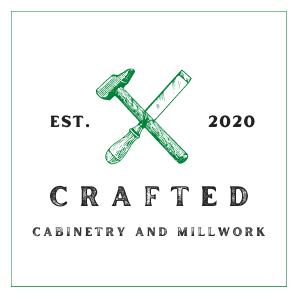They might not be the first thing you notice when you walk into a kitchen, but cabinet hardware plays a surprisingly important role. The right knobs and pulls can elevate your kitchen design, adding a touch of personality and functionality. But even the most stunning hardware can fall flat if it’s not placed correctly.
Fear not, design enthusiasts! This guide will transform you from a hardware placement rookie to a pro. We’ll delve into the world of knobs, pulls, and their ideal positioning for drawers, doors, and different cabinet styles.
Why Placement Matters
Think of cabinet hardware as the handshake of your kitchen. It’s the point of contact for you and your cabinets, and a poorly placed knob can be as frustrating as a limp handshake. Here’s why placement is crucial:
- Ergonomics: Easy access and comfortable grip are key. Hardware that’s too high, too low, or too close to the edge can make opening drawers and doors a chore.
- Aesthetics: Balanced placement creates a visually pleasing look. Hardware that’s haphazardly placed can disrupt the clean lines of your cabinetry.
- Functionality: The right positioning allows for a smooth opening and closing motion, especially for drawers laden with heavy pots and pans.
The Balancing Act: Knobs vs. Pulls
Before we dive into placement specifics, let’s address the knob vs. pull debate. Knobs are great for single-handed opening and offer a more traditional look. Pulls, on the other hand, provide a wider grip and are ideal for wider drawers or those frequently accessed by two hands.
Mastering Drawer Hardware Placement
Drawers are workhorses in the kitchen, so their hardware needs to be both functional and stylish. Here’s your guide:
- Small Drawers (Under 24 inches): A single, centered knob or pull works best. This keeps things balanced and provides easy access.
- Medium Drawers (24-36 inches): A single, centered pull is the go-to choice. For a more modern look, consider placing the pull higher in the top rail of the drawer front.
- Large Drawers (Over 36 inches): Double pulls are your friend here. Divide the drawer front into thirds and install pulls on the left and right sections for even leverage.
Pro Tip: When using double pulls, ensure they’re the same size and style for a cohesive look.
Conquering Cabinet Door Hardware
Now, let’s tackle those cabinet doors. Here’s how to find the sweet spot for your knobs and pulls:
- Base Cabinets: For a classic look, place knobs 2.5-3 inches from the bottom corner, opposite the hinge. For pulls, follow the same rule, but install them vertically.
- Wall Cabinets: Knobs typically go 2.5-3 inches from the top corner, opposite the hinge. Pulls can be horizontal or vertical, with the center of the pull aligned with the knob placement on the base cabinets for a uniform look.
- Specialty Cabinets: For pull-out pantries or trash can cabinets, consider placing the hardware higher on the drawer front for better leverage, especially when dealing with heavy items.
Aesthetics Take Center Stage: Style Considerations
While functionality reigns supreme, don’t forget about aesthetics! Here’s how to tailor your hardware placement to different cabinet styles:
- Traditional Kitchens: Opt for centered placement of knobs or pulls for a timeless look.
- Modern Kitchens: Experiment with top-mounted pulls for a sleek, streamlined aesthetic.
- Shaker Cabinets: Centering hardware within the recessed panel creates a clean and balanced look.
Bonus Tip: Use masking tape to mock up hardware placement before drilling. This allows you to visualize the final look and make adjustments as needed.
The Final Touch: It’s All About You!
While these guidelines offer a solid foundation, remember, your kitchen is your space. Don’t be afraid to experiment with placement based on your comfort level and personal preferences. After all, the best hardware placement is the one that feels most natural and functional for you.
So, grab your tape measure, unleash your creativity, and get ready to transform your kitchen with perfectly placed cabinet hardware!

